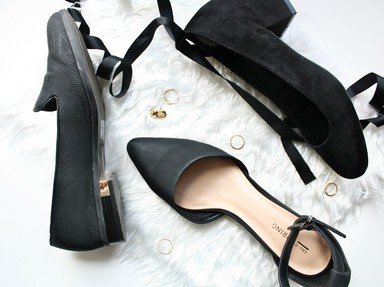Quiz Answer Key and Fun Facts
1. These shoes originally had a heel, but were later made to be flat. The birth of the modern version of these was attributed to Anna Pavlova. What style of shoe are they?
2. Though many civilisations had some form of clog, they are most often associated with the Netherlands. How do you say 'clog' in Dutch?
3. Most people have heard of brogues - a kind of dress shoe. What though, is 'broguing', which actually separates this dress shoe from others of the same ilk?
4. Do you remember 'bovver boots', a sturdy, stout, lace-up boot often worn by hooligans and skinheads? What brand of shoe was very much associated with this culture?
5. Espadrilles are shoes commonly found in Spain and France that have a sole made from a rope-like plant material. Which Western romance language which is associated with Spain does the word 'espadrille' come from?
6. What are galoshes specifically designed to do?
7. Flip flops, a type of light sandal with a flat sole and a Y-shaped strap, are common throughout the world. What do people call this type of footwear in Australia though?
8. Up until the mid 19th century, the overwhelming majority of shoes were not made for left and right feet - they were straight, so could be worn on either.
9. Lotus Shoes were specifically made for which nationality/sex?
10. Over 300 million pairs of these slip-resistant, buoyant shoes have been sold since the unveiling of the first pair in 2002. Often referred to by fashionistas as 'an effective form of birth control' what American footwear brand is this?
Source: Author
heatherlois
This quiz was reviewed by FunTrivia editor
kyleisalive before going online.
Any errors found in FunTrivia content are routinely corrected through our feedback system.

